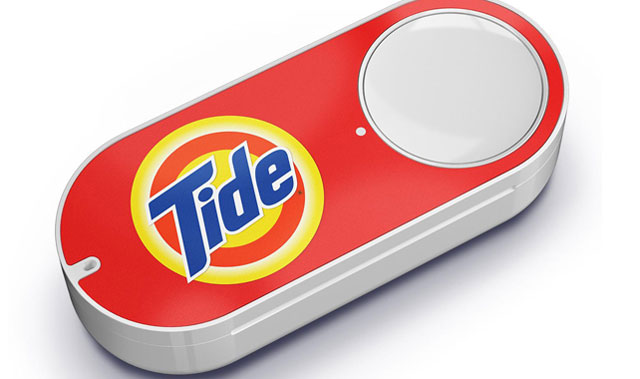
The Internet of things has attracted a lot of attention and generated considerable column inches; and yet, despite all the attention, has remained pretty much absent — an Internet of vapourware.
Samsung wants to Internet-connect all the items in your home and major firms such as Cisco, IBM and Apple are all keen to get involved in … in whatever it is.
Sometimes “smart” devices have really been about proof of possibility rather than producing any significant improvement in functionality or additional benefit to the consumer.
Finally Amazon, very much a real, non-vaporous company, has produced an Internet of things device called the Dash Button. The marketing hype that Amazon is building around Dash goes some way to hiding its mundane nature: while the handheld Dash device can automatically place orders for household goods by scanning barcodes or through speech recognition, the cut-down Dash Button is a small, push-button fob to keep next to, for example, the washing machine in order to order a single product such as washing powder with a single press. Using the household Wi-Fi network to connect to Amazon’s website, the device places the order and delivery is arranged, with payment and address details already in place as part of the householder’s Amazon Prime account.
Dash is not necessarily a surprising move for Amazon. This is after all the same e-commerce company that “created” the “1-Click” ordering system and even patented it in the US in 1997 (to great scorn), although the patent was rejected in Europe 14 years later.
As a further weapon in the Amazon armoury that includes competitive pricing, efficient delivery supply chains and huge choice of stock, shrinking the purchasing process to its most simple is an obvious element in Amazon’s competitive advantage. Maintaining that advantage requires the company to have sufficient vision, preparedness and ability to take risks in order to implement new technological developments in a retail context when opportunities arise.
This risk can sometimes bring significant rewards for the company. For example, Amazon was quick to respond to the growth of the cloud for business, with its Amazon Web Services now one of the leading cloud computing and storage services — confirming Amazon as a leading technology company, not just a shopfront. On the other hand, the Amazon recommendation system Grapevine was also proof that sometimes the company is slow to act, or can miss the market altogether.
An Internet of things device such as the Dash button is relatively mundane. There have been more ambitious and visionary attempts to simplify grocery shopping in the past. For example, LG’s Internet Digital DIOS — the original Internet fridge — arrived back in 2000, but the “smart fridge” failed to interest consumers. This proves that the technology has existed for some time but the willingness for consumers to accept this level of automation has taken much longer to evolve.
Nor does Dash really represent the full potential for the Internet of things in that it still requires human interaction — pressing the button — to place the order. Ultimately, shouldn’t devices automate, not just simplify, such mundane necessities as restocking washing powder? Although technically possible, this degree of automation (a promise of Internet fridges) remains a step too far for the majority of consumers and the Dash is the acceptable compromise.
Sometimes the first examples of products demonstrating a new and innovative technology may prove to be beyond the wants and even skills of would-be consumers, or beyond their preparedness to engage with it. More recent devices are certainly more simple and accessible than an Internet fridge, and perhaps more commercially viable, too. First steps — small steps, but steps nonetheless — towards a more fully-evolved potential. But if you want insight into what the future will look like, just scroll back to the past.![]()
- Gordon Fletcher works at the Centre for Digital Business at the University of Salford
- This article was originally published on The Conversation




